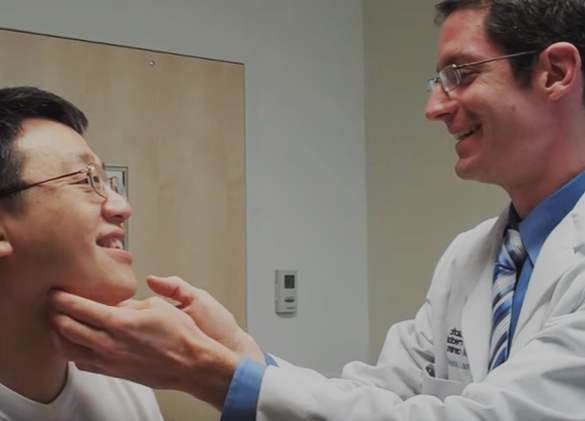Find out what goes into deciding how much bridge to remove during a hump reduction rhinoplasty. You'll also see how a rhinoplasty surgeon decides how well your skin will redrape after surgery.
I recently went over the top 5 things to know about dorsal hump reduction. The first thing to keep in mind is that bridge humps can be composed of bone, cartilage or both. Today let's investigate the second and third things on our list: deciding how much bridge bump reduction to perform and assessing how well the overlying nasal skin will redrape.
How low do we go?
Obviously, at one level the decision of how much to reduce the bridge hump is one of personal aesthetics or preferences. Some people prefer a more concave, less projecting bridge whereas others prefer to maintain a more straight (or slightly full) profile line. Additionally, one must consider the fact that you want to maintain the masculinity of the nose with male patients.
Preoperative digital morphing sets the stage for the discussion between you and your surgeon about how low you would like your bridge to be. The entire face and its proportions must be considered when deciding this as the bridge must harmonize with the underlying facial framework.
Skin redraping limitations
The other limitation when it comes to hump reduction (or making the nose smaller in general, actually) is that the overlying skin must redrape over the new, smaller nasal structure. Skin isn't removed during surgery, but thanks to the underlying elasticity of the skin it will contract around the new, smaller nose.
The shrink wrap effect
I like to call this process the "Shrink Wrap Effect". Surgical judgement is needed to assess how well any given person's skin will accommodate this process. Generally, younger patients and patients with thinner skin will redrape very well. Older patients and those with thicker skin won't be able to redrape as vigorously. The risk is that the excess skin will visually result in a bulbous, ill-defined nose.
Drastic down sizing of a big nose with excellent skin redraping
Let's go over a couple examples that illustrate my point. This patient was interested in reducing the overall size of her nose.

You can see that her tip is quite over-projected and her bridge quite full. The overall sense is that the patient's nose is too large for her face.

The patient is in her early 20s and has relatively thin skin, however. Thanks to these findings I was able to take down quite a bit of excess nasal dorsum and deproject the tip. Her skin was able to vigorously shrink wrap around this smaller structure. Now her nose better fits her face.
Modest downsizing of large nose with thick skin
In contrast to the above patient is this gentleman. He was interested in creating a smaller nose, but as you can see his skin is much thicker than the prior patient. Also, he's a bit older as well.

This doesn't mean that we couldn't make any changes. I just had to temper the "ideal" smaller nose with what I felt was possible to achieve.

In the before and after photos above you can see how I was able to achieve a noticeable reduction in the patient's hump while maintaining a masculine, natural appearing nose.
Related Seattle Rhinoplasty Blog Posts:
- Top 5 things to know about dorsal hump reduction
- How to remove a bony bridge bump
- Morphing revision rhinoplasty
- Nasal hump removal


